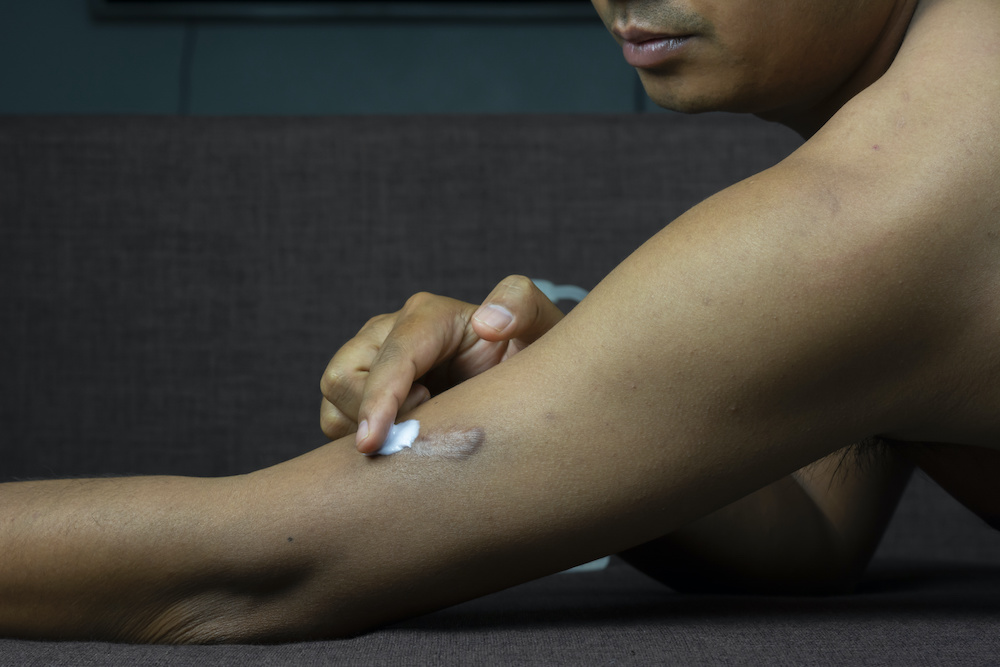4 Things You Should Know About Keloids

Keloid scars can be large and protrude from the skin. Because of this, they can bring some unwanted attention. People may wonder if you had surgery, if you were born with it and if it hurts. Questions about your scar may be a source of embarrassment or self-consciousness. Many people seek treatment for their keloid; while others choose to embrace their body’s natural response to an injury. Keloids are not harmful and are not a sign of an internal illness or disorder; however, they can be painful or itchy for some people.
If you have a keloid scar, you probably want to learn more about this skin condition and find out what you can do to treat or prevent them in the future. Let’s explore 4 things about keloids that you should know before seeking the help of a dermatologist.
What are Keloids?
Scarring is the body’s natural response to a trauma or injury to the skin. When it comes to keloids, your body overreacts to the trauma by overproducing scar tissue. They typically grow larger and thicker than the original injury and can appear as pink or brown raised bumps.
Keloids can continue to grow for several months or even years. When they grow on a part of the body that bends, such as the elbow or knee joint, they can decrease mobility.
4 Things You Should Know About Keloids
Certain groups of people are at higher risk of developing keloids.
While anyone can develop a keloid scar, certain people are at a higher risk of getting a keloid after an injury. Keloids are more likely to develop in people with darker skin tones. Younger people under the age of 30 tend to develop these scars more commonly than older people. There also may be a genetic factor – if you have a family history of keloids, you may be more likely to develop one after an injury.
Keloids typically appear in certain areas of the body.
While there are scars known as “spontaneous keloids” which seemingly appear out of the blue, they typically appear after an injury. Some of the most common causes of a keloid scar can include:
- Ear piercing
- Chickenpox
- Acne
- Cut
- Burn
- Abrasion
- Tattoo
- Surgical scar
- Insect bite
There are also certain locations on the body that are more prone to keloids, including the chest, back, shoulders and earlobes.
Treating keloids can be challenging, but not impossible.
As we mentioned earlier, keloids are not a sign of a deeper health concern and are generally nothing to be concerned about. For some people, they can cause some pain and itchiness but are not usually harmful. Treating keloids can be challenging, especially because they have a tendency to reoccur. Your dermatologist may suggest corticosteroid injections, surgery, laser treatments, cryotherapy, radiation and silicone sheets and gels depending on the size and nature of the scar.
You can reduce your risk of developing a keloid.
If you are prone to keloids, you can reduce your risk of developing another one by avoiding procedures that can cause injury or trauma to the skin such as ear piercing, tattoos or other elective surgeries. If you must have any type of surgery, communicate to your doctor that you have a propensity to develop keloids so your surgeon can take precautions.
Atlanta & College Park Keloid Dermatologist
If you think you have a keloid, you should first consult with a dermatologist to be sure that it is actually a keloid scar. Buckhead Dermatology of Atlanta and College Park has extensive experience in diagnosing and treating keloids for their patients. Our board-certified dermatologist Dr. Straughn has knowledge of the most effective treatments to get you the results you want for your keloid scar.
Contact our office today to schedule an appointment at 404-816-4000.
